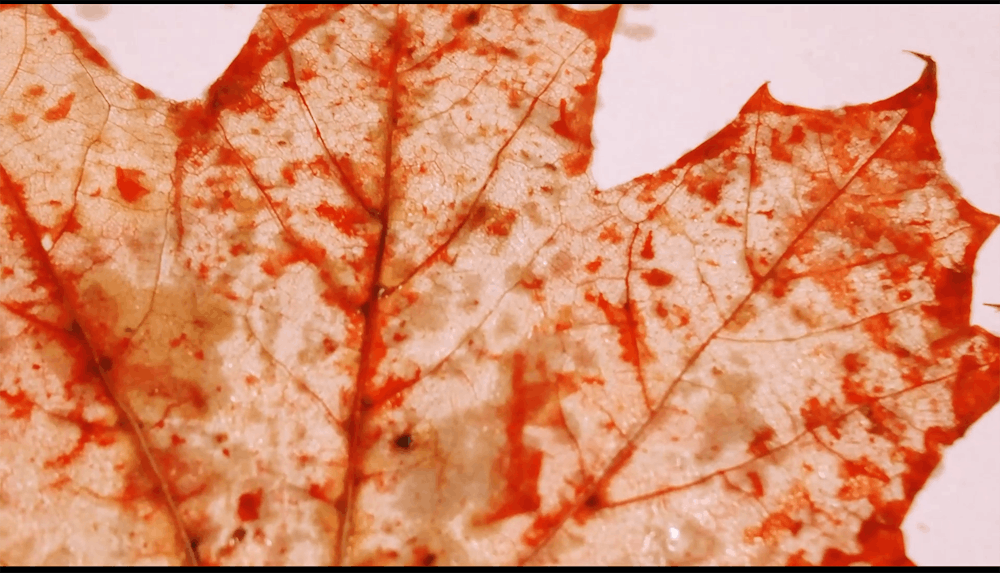Scarlet Dystopia is a video work set in a "laboratory of the future," showcasing human interference in leaf growth by turning all the world's leaves red.
The project explores the ecological phenomenon of leaves turning red in the fall, traditionally seen as a byproduct of chlorophyll breakdown. Recent studies suggest plants may actively produce red pigments to repel pests, as insects avoid bright colors. Research by Stefano Mancuso and Viola has shown that although plants do not have a brain, their ability to perceive their environment is comparable to that of animals, if not sharper (Stefano Mancuso and Viola, 2015). Further research (Hamilton, 2022) suggests that bright fall colors may be a signal used by plants to warn insects, which tend to avoid brightly colored trees in favor of darker, less defensible trees. This makes the brightest-coloured trees more likely to survive and reproduce.
Based on this phenomenon, I envisioned the far-reaching effects on the ecosystem if humans changed the leaf color of all trees to big red. The ecological balance could be disrupted without insects, which play a key role in plant growth, pollination, and decomposition. At the same time, the leaf color change would also affect the foraging behavior of birds and other animals, which in turn would alter the food chain. This provokes us to consider whether humans have the right to intervene in nature and its possible ecological consequences, showing the material entanglements between humans and non-humans involving science, ethics, and environmental protection issues.




